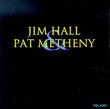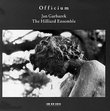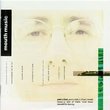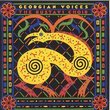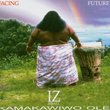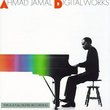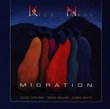| All Artists: Dino Saluzzi, Anja Lechner Title: Ojos Negros Members Wishing: 2 Total Copies: 0 Label: ECM Records Original Release Date: 1/1/2007 Re-Release Date: 4/3/2007 Genres: International Music, Jazz, Special Interest, Pop, Classical Styles: South & Central America, Argentina, Jazz Fusion, Chamber Music Number of Discs: 1 SwapaCD Credits: 1 UPC: 602517097575 |
Search - Dino Saluzzi, Anja Lechner :: Ojos Negros
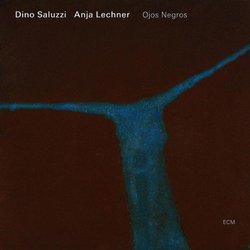 | Dino Saluzzi, Anja Lechner Ojos Negros Genres: International Music, Jazz, Special Interest, Pop, Classical
Few artists have as rich and varied a history with ECM as Dino Saluzzi. The Argentine bandoneon master has recorded 10 albums, and each one tells it's own endlessly inventive musical story. The spirit of Dino Saluzzi's wor... more » |
Larger Image |
CD DetailsSynopsis
Album Description Few artists have as rich and varied a history with ECM as Dino Saluzzi. The Argentine bandoneon master has recorded 10 albums, and each one tells it's own endlessly inventive musical story. The spirit of Dino Saluzzi's work is derived from the oral tradition of Argentina's music and its value on melody and simplicity. A 1996 collaboration with the Munich-based Rosamunde Quartett became the starting point for Saluzzi's work with cellist Anja Lechner. Lechner has had her own success on ECM, most notably with her album, the hit Chants, Hymns and Dances. For the past six years, Saluzzi and Lechner have performed in concert all over Europe. Ojos Negros is the first recording from this magical duo, and creates a richly lyrical dialogue that blurs the lines between folk music, jazz and tango. This is chamber music with Argentine traditions, presented through Saluzzi compositions and the beautiful old tango tune "Ojos negros" ("Black Eyes"). Similarly Requested CDs
|
CD ReviewsPure grace and beauty in sound... Larry L. Looney | Austin, Texas USA | 04/14/2007 (5 out of 5 stars) "I've had this recording for 2-3 weeks now, and I can't seem to get enough of it. On first listening, from the first few notes breathed from Dino Saluzzi's bandoneón, I knew I was in for something magical. Even though Dino's `sound' is recognizable immediately, no one should mistake that statement as characterizing him as standing still musically - his art is continuously evolving and growing. Since the issue of his first album for ECM, KULTRUM (1982), I've been following the creativity of his music, and I've never been disappointed. He has worked as a solo artist, in duos, trios and larger groupings - his 1999 recording with the Rosamunde Quartett (again entitled KULTRUM) showed that the bandoneón fit perfectly into a setting that could almost be classified as chamber music. That recording also marked his first work with Anja Lechner, cellist for Rosamunde - she had for some time loved the music of the tango, and working more closely with Dino allowed her to hear that genre performed in a manner much more authentic than the European derivatives to which she had mainly been exposed. Saluzzi's music, she relates, `...was more profound that just tango. He was playing a music that was really his own...I entered a new world.' She is without a doubt one of the finest cellists working today in any genre - her skill and sensitivity, and her ability to convey emotion and feeling in her playing without overriding her partner make her a perfect match to Dino's work. The phrase `more profound than just tango' describes the art of Dino Saluzzi perfectly. In his hands, the bandoneón breathes with a life of its own - it becomes a part of him, an alternate voice, a storyteller, a filter through which passes everything he has seen, felt, tasted, experienced over the course of his life. When I listen to Dino play, I can close my eyes and see a mountain path shrouded in the mist of early morning. I can rub the dirt of a country road at twilight under my bare feet, fell wind with a hint of coming rain blowing in early evening, take in the scent of a meal cooking over a fire, hear the laughter of children playing, relax in the embrace of a lover, see the wisdom in the dark eyes of a forest Indian. Dino's music is his history - there are pieces inspired by events, family members, acquaintances, places and times - and the skill, love and care with which he evokes all of these things is nothing short of palpable in his playing. There are a couple of pieces here that Dino has recorded before - `Tango a mi padre', the album's opening track, is a loving portrait of his father, and first appeared on MOJOTORO in 1991. `Minguito' was recorded on VOLVER, a project he did with the great Italian trumpeter Enrico Rava, in 1986. All of the pieces, save `Ojos negros' - composed by bandoneónist Vicente Greco (1888-1924) - are Saluzzi originals. `Esquina' is a particularly beautiful example of how Dino's memories wind their way through his music. He remembers the time, in his village of Salta, more than 60 years ago: `I still have this very clear picture of my father, sitting on a rock somewhere in our little village. I see him from the back, in his short-sleeved white t-shirt, in the moonlight, playing the bandoneón - and he's playing a song I loved when I was just seven years old, a sad song about leaving a beautiful small town to go to the big city of Paris...' The bandoneón and the cello complement each other exquisitely throughout the recording - alternately leading or supporting, weaving in and out of each other with the grace of skillful dancers, moving so naturally that the listener might be compelled to suspect mind-reading talents are involved. Grace is indeed involved, but the music is also evolving constantly - Anja Lechner says, `In Dino's music, you never play any phrase the same way twice.' Dino adds, `We are basically playing a music build of rubato phrases - but the conception of the rubato is different at every concert. The pieces change all the time, but the way the improvising is integrated is different from the jazz approach...the composition is an idea that suggests some possibilities...we take a lot of freedom with the forms.' The freedom here is based on structure as a foundation - but the skill of the players never allows the music to descend into anarchy. There is grace and beauty in every note, every phrase - it's a wonderful thing to experience. Now and then one can hear the rhythm and form of the tango assert itself - it rises up for a moment, as if to remind us of where this music was born, of its lineage, then dances off into the mists of sound created by the players, leaving an audio shadow, a presence that never quite disappears. That being said, one should definitely not go into Dino Saluzzi's music expecting it to be limited to `tango' - that would be a big mistake. When asked if his music should be called `tango', Dino wisely says `Time spent trying to define the music is time taken away from playing it. I always simply say, "I play music, sir", and I hope that is enough...does the music touch you or not? This is what matters.' I've always felt that the mark of a master musician is the impression left with the listener that the instrument is an extension of the performer's voice, of his or her very soul - a window to their inner being, through which everything that makes them the person they are can be `seen' in the form of sound. This recording delivers on that rare level - and it soars even higher on repeated listenings. It's a treasure in the fullest sense of the word. " Soporific Yet Satisfying Kurt Harding | Boerne TX | 06/07/2007 (4 out of 5 stars) "The liner notes in the handsome booklet that accompanies Ojos Negros start with a very telling anecdote involving Argentine writer Jorge Luis Borges, and it is obvious that the author of the notes intended the putative Borges quote to apply to the music of Dino Saluzzi as well. That is, if you don't understand the work, then its not for you. That has been the problem for me since I was introduced to the music of Saluzzi through his work with Al DiMeola's world music project. He was so good there, I sought out his own projects. But as hard as I tried, I just didn't connect with any of them until now. If you are looking for the music of Dino Saluzzi, then its likely that you already know what the bandoneon is all about. There surely is not another instrument with the power to express melancholy, longing and angst as the bandoneon and that is what makes perfect for tango. But in the last half-century, adventurous musicians, Saluzzi among them, have explored the possibilities of the bandoneon beyond the world of tango. The foundation of Ojos Negros lies in tango. The title of the CD itself is also the name of a tango dating from the time of the Guardia Vieja of the early 20th century, and it is indeed the only composition covered here that is not Saluzzi's. If you know the piece, you will surely recognize it. But while Saluzzi's music is anchored in tango, his collaboration here with German cellist Anja Lechner extends his musical reach deep into the worlds of chamber music and avant-garde jazz and the result is often spellbinding. I have listened to Ojos Negros at least a dozen times since I bought it. And though I did not like it instantly, its musical secrets gradually revealed themselves to me after repeated listens. This is a work that surely demands that you be all ears lest the key to its mysteries escape you. It is somber, it is stately, and it is often soporific, yet it is ultimately satisfying. A couple of other Saluzzi CDs I own haven't really "worked" for me. Ojos Negros does. If you have the patience and the time to listen without distractions, you may find that it works for you as well." Irresistible Karl W. Nehring | Ostrander, OH USA | 07/07/2009 (4 out of 5 stars) "The combination of bandoneon (a kind of accordion) and cello might not strike you as something to which you would want to hear, but believe me, this is a wonderful recording that offers great musical delight. The music, primarily compositions by Saluzzi, is wistful, playful, melodic, melancholy, joyous, and always expressive. It is a delight to hear the interaction between these two musicians as they spin out phrase after phrase. It is hard to listen without wanting to play along with them; you might find yourself brandishing and imaginary bow or squeezing an imaginary squeezebox. Or perhaps you will not play with them, but rather dance to their music. In any event, you will not be able to listen passively to this recording. You will find yourself becoming involved in some way or another. This is truly irresistible music!"
|

 Track Listings (8) - Disc #1
Track Listings (8) - Disc #1